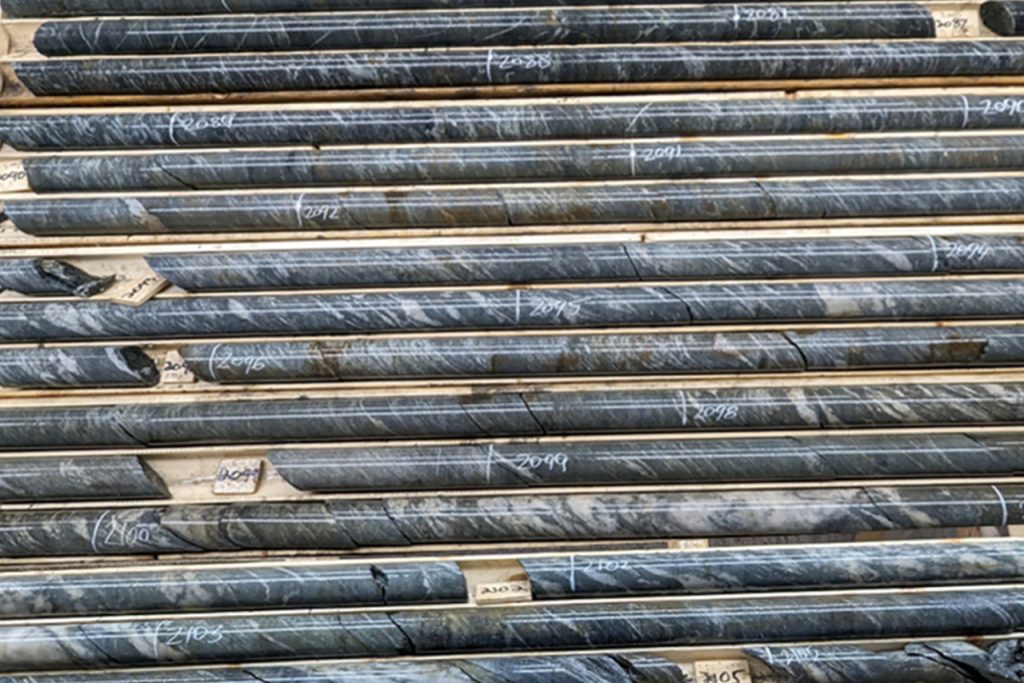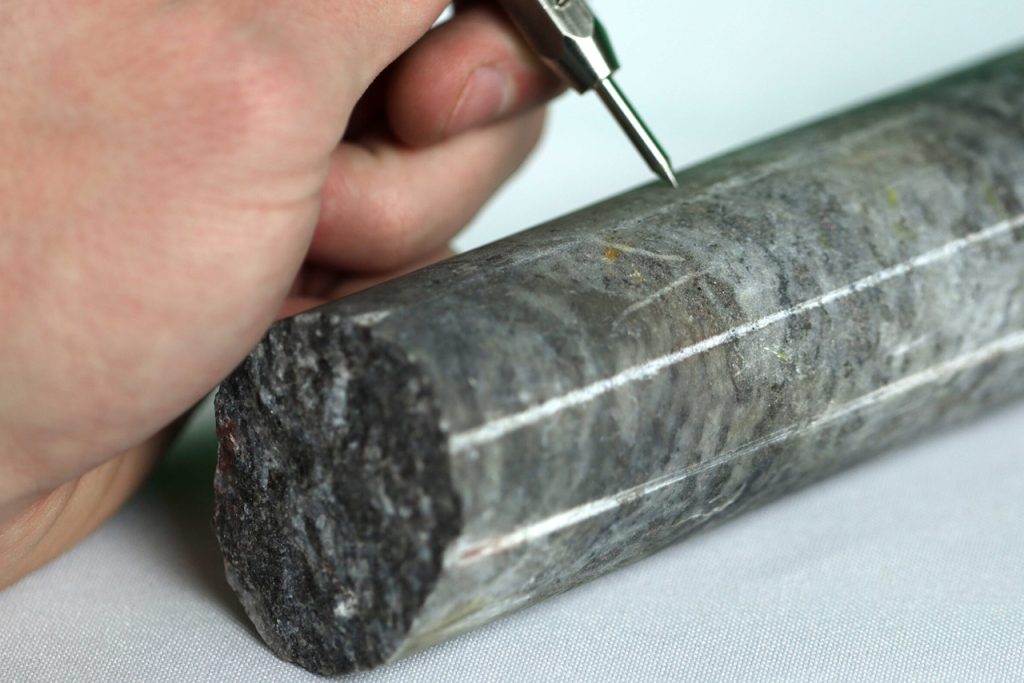As a geological consultant targeting gold, logging drill core effectively is a critical step in delineating ore bodies and understanding the geological context of a prospect. Three essential tips can significantly improve the accuracy and usefulness of drill core logs for gold exploration projects. These practices underscore the importance of detailed, systematic logging in the exploration and evaluation process, enhancing the potential for successful gold discovery.
Tip#1
First, ensuring accurate lithology markup is crucial for identifying and recording changes in rock types, alterations, mineralization, and veining, which are key indicators of gold presence. This involves a thorough examination of the wet core, utilization of 3D modelling software for anticipating geological features, and meticulous labelling of lithologies.
- Ensure accurate lithology markup.
- First wet down the core and have a look over the entire hole (or what is on the racks) and note any changes in lithology.
- It is a good idea to bring the drill hole up in your chosen 3D modelling software or get a project geologist to print a cross-section off, so you know what lithologies and structures to expect when logging.
- Go through the hole and separate lithologies based on overall lithology and split up according to changes in alteration, mineralisation and veining.
- Label lithologies on each side of a boundary mark and at least once per tray.

Tip#2
The Second tip for Geological Consultants is that accurate sample markup is vital for capturing the full extent of geological features, adhering to specific length guidelines, and sampling strategically around lithology boundaries and within ore zones to aid resource modellers in their analyses.
- Ensure accurate sample markup.
- A good guide is to ensure your samples are a minimum of 0.2m length and a maximum of 1.2m in length. This works well for NQ and HQ half core. You may need to shorten your maximum interval for HQ and PQ core to ensure you can fit the sample in the bag, especially if you are sampling whole core.
- Ensure you always sample to your lithology boundaries – this is important for when the resource modellers domain your drill hole.
- Ensure you include the entire feature (alteration, mineralisation, veining or deformation) in your sample interval, including splitting out different vein intensities and types.
- Sample 1cm from the edge of the vein so that you ensure no contact mineralisation is captured and smeared into the surrounding waste rock.
- Ensure you sample a buffer around your ore zone – generally 5m either side works but this can vary depending on your ore body and if there is a low-grade halo. Speak to you resource modeller about this one.

Tip#3
Lastly, for all you Geological Consultants, precise structure markup, facilitated by tools such as the Kenometer for measuring veins, foliations, and faults, allows for the detailed recording of structural data crucial for interpreting the geological setting and potential gold mineralization pathways.
- Ensure accurate structure markup.
- If there is an oriented line, use a Kenometer to measure structures in the drill core, such as veins, foliation and faults.
- Record your alpha and beta measurements on the drill core.
- Simply google search how to use the alpha-beta tool to find out how to use a Kenometer.

